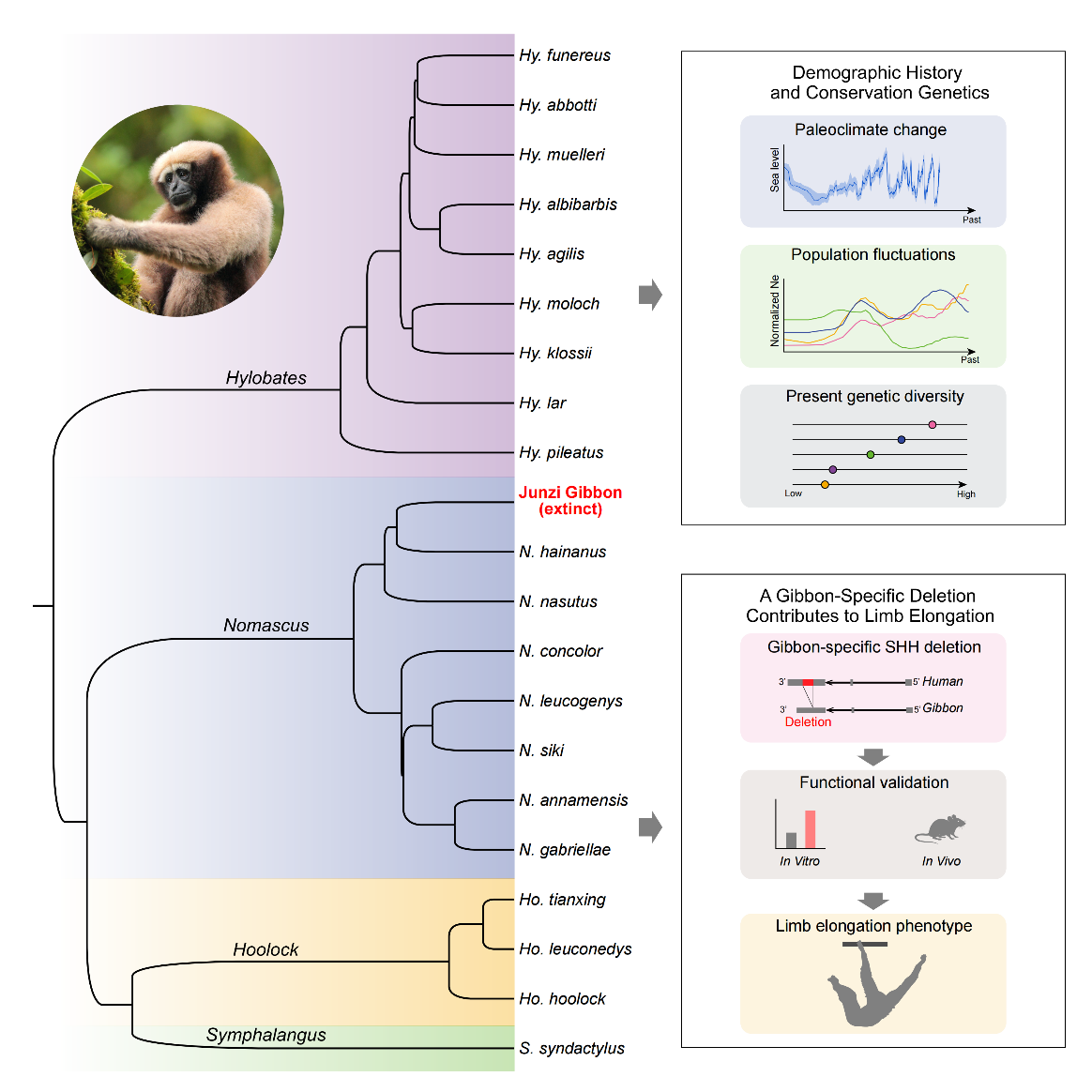Gibbons, the small apes closely related to humans, face severe threats to their survival, yet many aspects of their evolution have remained unclear due to their rapid diversification. A comprehensive genomic analysis of gibbons has resolved key debates about their evolutionary history while providing critical insights for conservation efforts. The study, led by Prof. Dong-Dong Wu from the Kunming Institute of Zoology, Chinese Academy of Sciences (CAS), and collaborating institutions, presents extensive genomic resources, including chromosome-level reference genomes for all four genera and whole-genome resequencing of 18 extant species.
Published in CELL, the research establishes the definitive phylogeny of the four gibbon genera as “(Hylobates, (Nomascus, (Symphalangus, Hoolock)));”, settling long-standing taxonomic debates. Through analysis of ancient mitochondrial DNA, the study also reclassifies the extinct Junzi imperialis—a specimen discovered in the 2,200-year-old tomb of Qinshihuang’s grandmother—within the Nomascus genus, refining our understanding of gibbon diversification and historical distribution.
The researchers conducted conservation genomics and ecological niche modeling analyses that revealed historical fluctuations in gibbon population sizes and habitat suitability. These findings correlate with the impacts of past climate change, showing that most gibbon species experienced a severe population bottleneck around 100-200 thousand years ago, highlighting the vulnerability of these threatened primates to environmental shifts. Furthermore, the analysis revealed that Hoolock gibbons possess critically low genetic diversity and high levels of inbreeding, placing them at an elevated risk of extinction and requiring urgent conservation attention.
Notably, the study identified a 205-base pair deletion in the Sonic Hedgehog (SHH) gene, a critical regulator of limb development, associated with the characteristically elongated limbs of gibbons. This discovery was validated through transgenic mouse experiments, which demonstrated that the gibbon-specific deletion leads to significantly longer limbs, providing mechanistic insights into gibbon adaptation.
These genomic resources not only clarify gibbon evolution but also establish a foundation for evidence-based conservation planning. The findings offer new perspectives on primate evolution while supporting urgent conservation measures for these endangered species.

Contact:
DONG-Dong WU, Kunming Institute of Zoology
Email: wudongdong@mail.kiz.ac.cn
Link:
https://www.cell.com/cell/abstract/S0092-8674(25)01181-X
